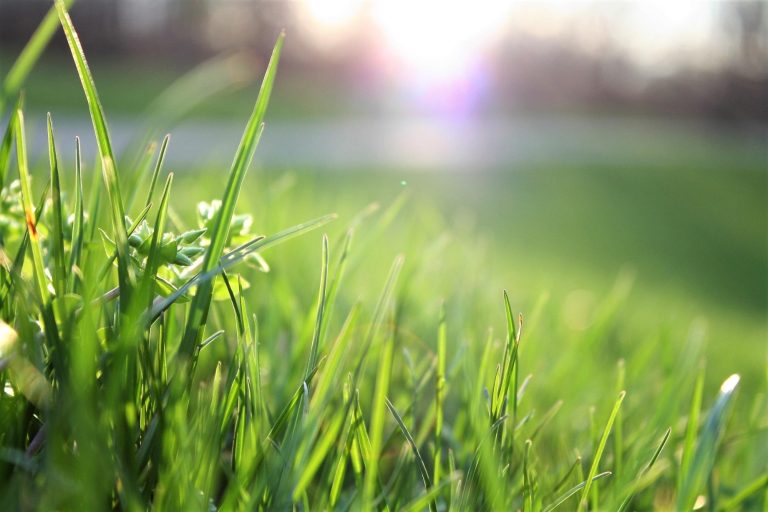A healthy, lush, and resilient lawn is not only aesthetically pleasing, but it also offers various environmental benefits. However, maintaining a perfect lawn can be a challenging task, especially if you are not familiar with the steps involved in lawn care. One crucial aspect of lawn care is aeration and overseeding. In this guide, we’ll explore the importance, benefits, and process of lawn aeration and overseeding to help you revitalize your turf.
Why Lawn Aeration Matters
Lawn aeration is a process that involves perforating the soil with small holes to allow air, water, and nutrients to penetrate the grass roots. This helps the roots grow deeper and produce a stronger, more vigorous lawn. Aeration is important because it improves oxygen flow to the grassroots, increases water penetration and reduces runoff, reduces soil compaction to allow roots to expand and grow, enhances the breakdown of thatch, a layer between the soil surface and green grass, and prepares the lawn for overseeding, encouraging new grass growth.
The best time to aerate your lawn is during the grass’s active growing season, usually in spring or fall. Aeration should be done at least once a year, but heavily used or compacted lawns may benefit from more frequent aeration.
For successful lawn aeration, water your lawn a day or two before aeration to soften the soil. Mow your lawn to a slightly lower height than usual and mark sprinkler heads and other obstacles with flags or paint to avoid damage. Aerate the lawn using the appropriate equipment, ensuring even coverage and 3-4 inches between holes. Break up the extracted soil plugs and spread the soil evenly across the lawn using a rake or mower.
Post-Aeration Care
Your efforts to maintain a healthy lawn shouldn’t stop after aeration. Regular lawn care is necessary, including watering, mowing, fertilizing, and controlling weeds, pests, and diseases. Stick to a consistent maintenance schedule to ensure your lawn remains in the best condition and gains the full benefits of aeration and overseeding. In case you need professional help in maintaining your lawn, you can always visit the Golf Course Lawn Store to find suitable products for weed control, fertilizers, and pest management.
The Benefits of Overseeding
Overseeding, the process of adding new grass seed to an existing lawn, can provide several benefits for your turf. It fills in bare or thinning areas to create a denser, more uniform appearance, improves the turf’s resistance to diseases and pests introduces more desirable grass species or varieties to promote biodiversity, and rejuvenates old grass to increase the lawn’s overall health and vigor.
Combining aeration and overseeding can create a synergy that helps you achieve a more robust, lush, and healthy lawn.
After aeration, it’s time to overseed your lawn. First, select the right grass seed blend compatible with your region and intended use. Apply the seed using a broadcast or drop spreader, with a rate recommended on the seed package. Lightly rake the seed into the soil to ensure good seed-to-soil contact and water the lawn daily for at least the first two weeks, keeping the seedbed moist. Avoid mowing until the grass reaches a height of 3-4 inches, then gradually reduce the height to your preferred level
Choosing the Right Equipment
Several tools can be used to aerate your lawn, including manual aerators, mechanical aerators, and aerator shoes. The type you choose will depend on your lawn size, soil compaction level, and budget.
- Manual aerators: These handheld devices usually have two to four hollow or spiked tines, making them suitable for small lawns or spot aeration. They are also budget-friendly but can be labor-intensive.
- Mechanical aerators: Ideal for larger lawns, these powerful machines can be rented or purchased. They come in two types – plug aerators and spike aerators. Plug aerators are recommended as they remove soil plugs, thus reducing compaction more effectively.
- Aerator shoes: Equipped with spikes, these shoes are affordable and easy to use. However, they might not provide the deep aeration required for heavily compacted soil.
Common Concerns
Many people may have questions if they’ve never aerated a lawn before, so here are the answers to a couple of questions many beginners might have. If you want to know how often you should overseed your lawn, it’s generally recommended to overseed once a year, usually in the fall, to replenish lost grass and maintain a thick and healthy lawn. However, overseeding frequency may vary depending on your specific lawn conditions and desired appearance.
Can you fertilize your lawn at the same time as overseeding? Yes, applying a starter fertilizer before or after seeding can be beneficial, as it provides essential nutrients for new grass growth. Be sure to choose a fertilizer specifically designed for use with new seedlings and follow the recommended application rate.
Aeration and overseeding are essential steps in revitalizing your lawn and promoting healthy grass growth. By following the practices outlined in this guide, you can be well on your way to a vibrant, lush, and resilient lawn that boosts your property’s curb appeal and provides environmental benefits. Happy lawn care!

